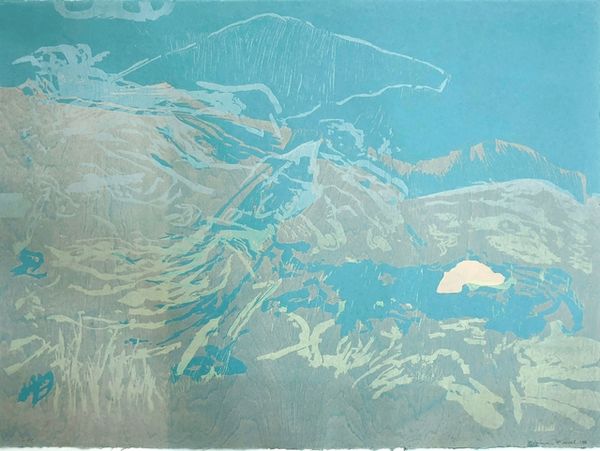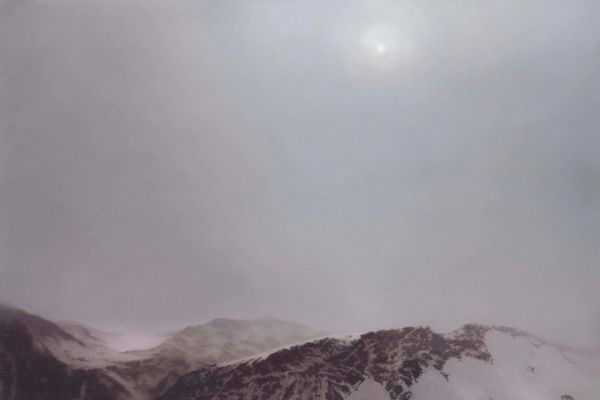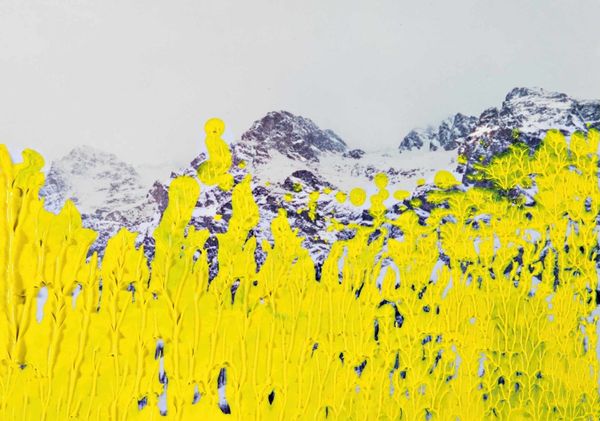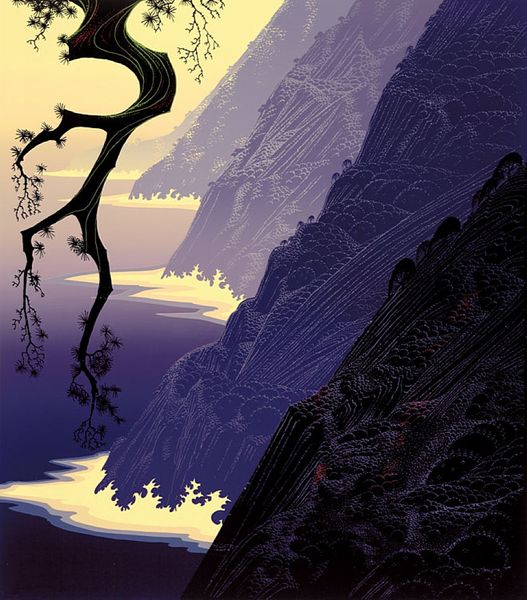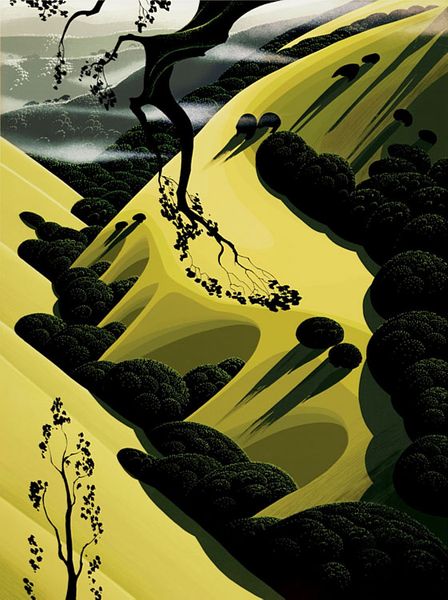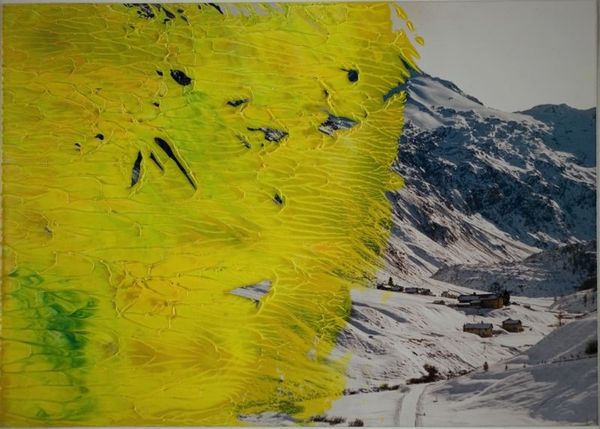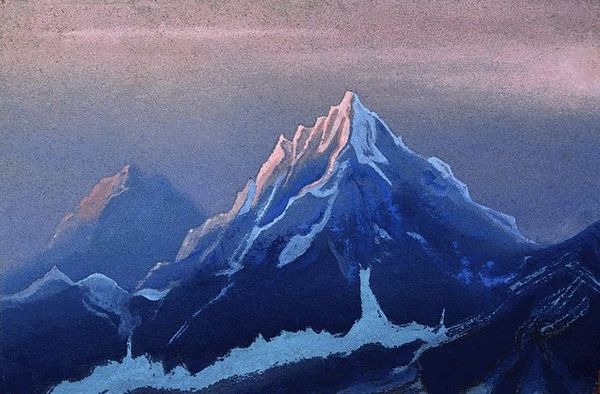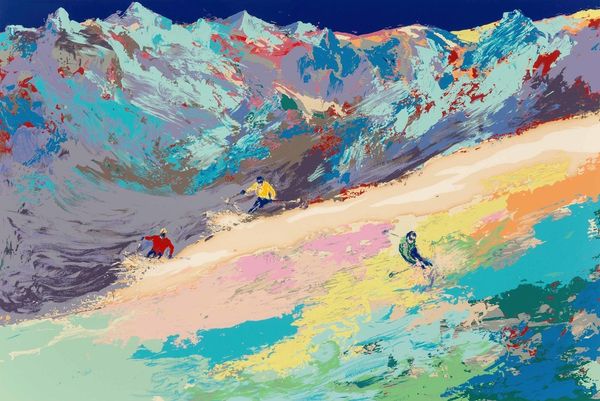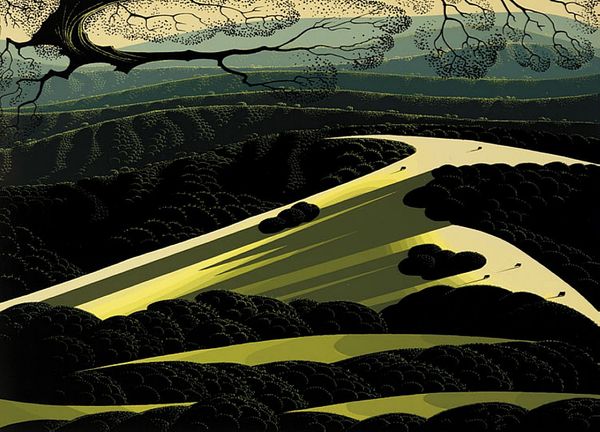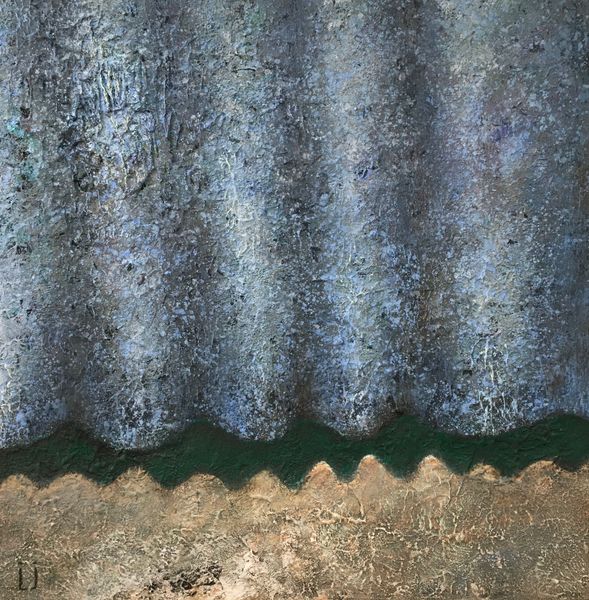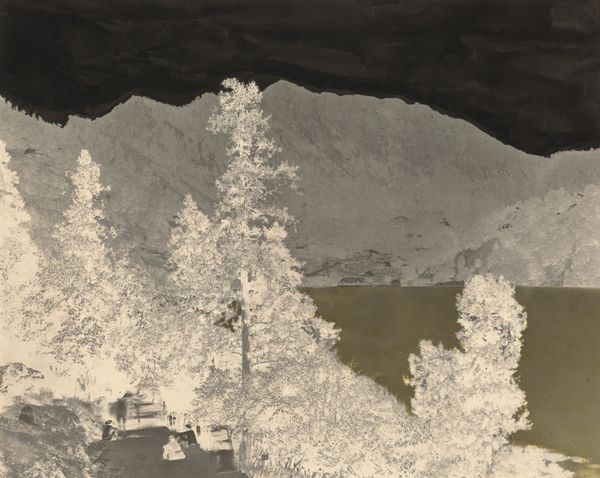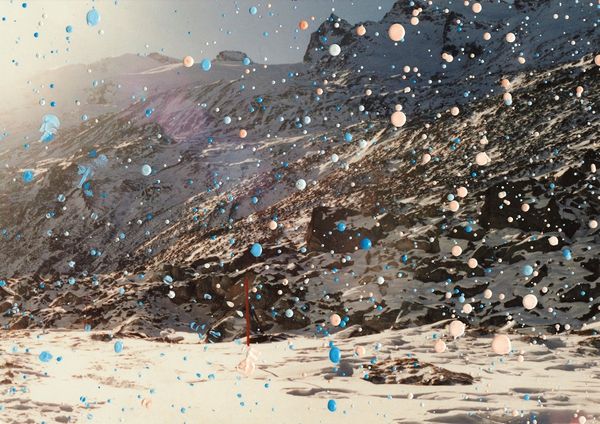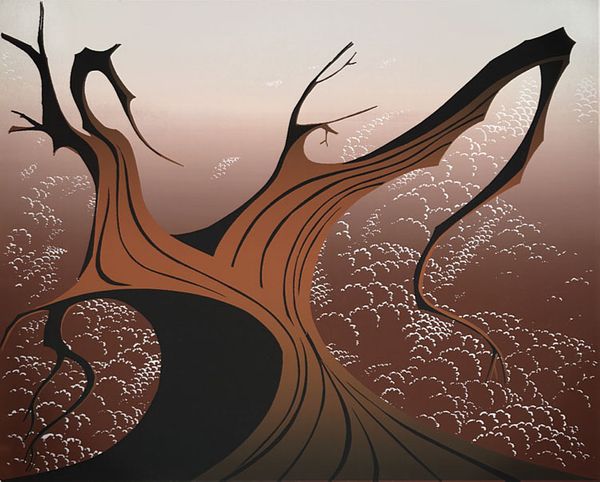
#
capitalist-realism
Copyright: 2019 Gerhard Richter - All Rights Reserved
Curator: Today, we're looking at Gerhard Richter's "19.3.92", painted in 1992 using acrylic on canvas. Editor: Immediately, I'm struck by its somewhat uneasy juxtaposition of what appears to be an idyllic meadow overlaid with the shadow of imposing mountains. The yellow acrylic seems to simultaneously obscure and highlight the landscape underneath. Curator: The landscape is not explicitly depicted but suggested through horizontal lines and the distribution of tones, an example of how Richter blends representation and abstraction. The lines and composition create depth of field. It is the formal qualities that allow us to engage. Editor: Yet the mountain overshadows and renders the possibility of idyll nearly impossible, suggesting perhaps, an unease related to landscape's fraught relationship with exploitation and capital in post-industrial society? The acidic yellow might even be read as a symbol of environmental degradation. Curator: While I appreciate your social interpretation, I find the vibrant, almost luminous, quality of the yellow engaging precisely because of the way that its linearity enhances our apprehension of depth and contrast with the grays and whites behind. It plays a sophisticated game with perspective. Editor: Yes, but let's not ignore how abstraction, especially within a supposedly neutral landscape, becomes complicit in erasing histories of trauma. Richter was painting this after the fall of the Berlin wall, so his engagement with landscape becomes loaded in this geopolitical context, even if subtly. Curator: I maintain that one should consider how Richter invites viewers to analyze color as form, how it organizes and affects our sense of perception, that semiotic relationship should not be abandoned simply for broader geopolitical discourse. Editor: And I insist, those formal aspects of the piece must be held in tension with the recognition that "landscape" has been deployed throughout history to naturalize specific ideological claims, in this case a reunification. Perhaps its very slipperiness is its greatest strength? Curator: In any case, whether you consider Richter's painting as simply a semiotic experience or a reflection on environmental themes, it exemplifies his adept blending of realism and abstraction. Editor: Ultimately, the painting invites ongoing dialogue on what we read when encountering constructed representations of land in relationship to power.
Comments
No comments
Be the first to comment and join the conversation on the ultimate creative platform.
